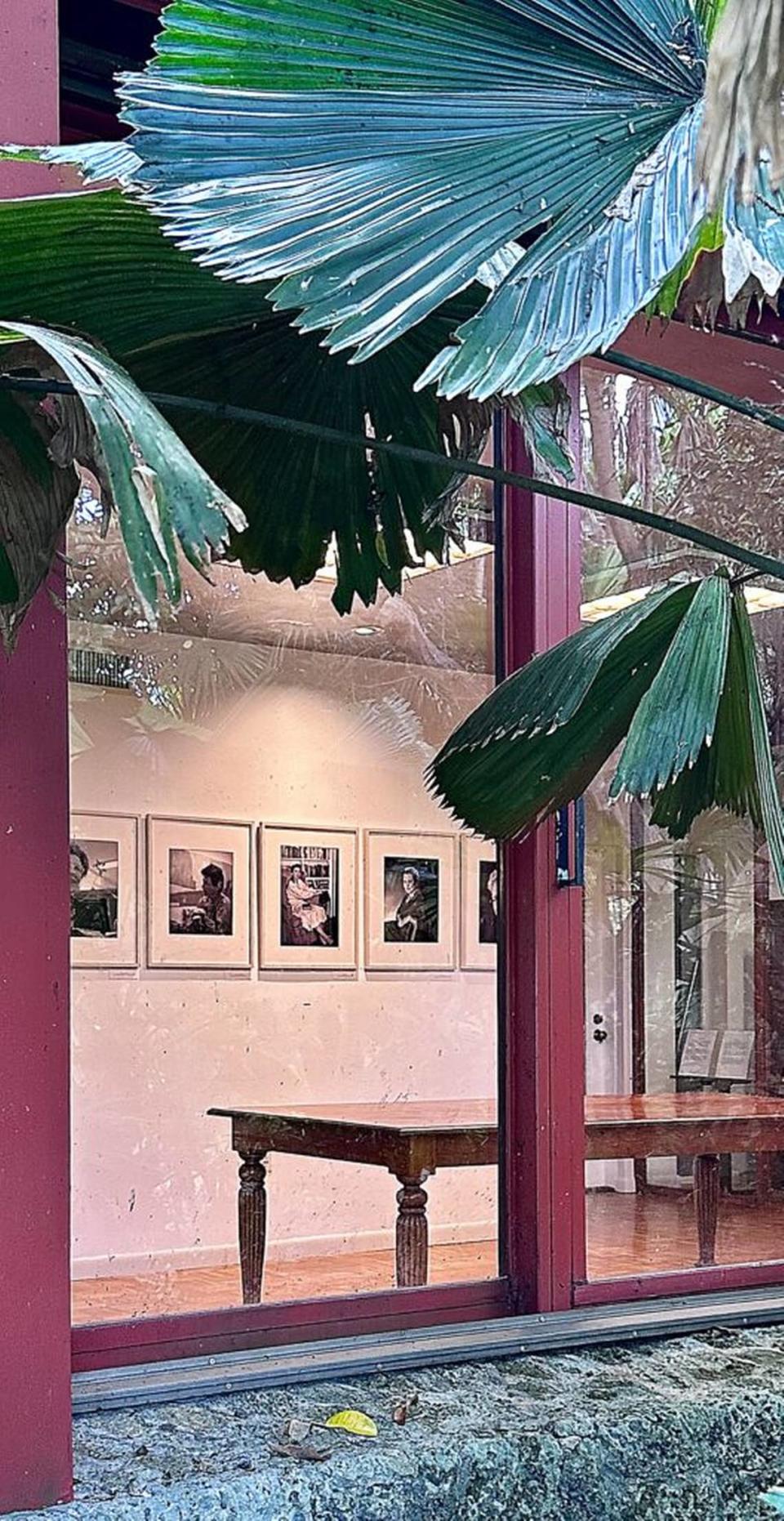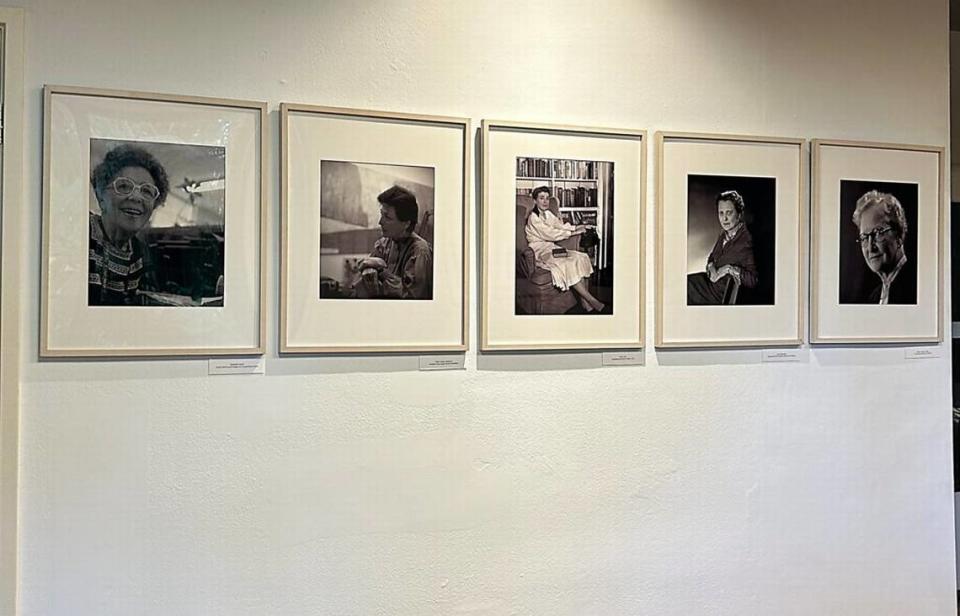Photo exhibit at the Kampong is a significant slice of local Miami history
“A Lens on Community: Photographs by Klara Farkas and Georgette Ballance” is an exploration of humanity through the work of two remarkable South Florida photographers. The historically significant mother/daughter exhibition is currently on view at The Kampong in Coconut Grove, a location that reflects the intertwined relationships between histories both human and natural. Farkas (1910- 2014, Hungary) lived and worked in Coconut Grove for 70 years and passed just shy of her 104th birthday and Ballance, her daughter (1956, USA), continues to live in Miami.
The exhibition has two themes, unified by Farkas, portraits and the landscapes and peoples of Ethiopia. The topics are divided by location within the exhibition, installed in two separate parts of the Kampong. There are black and white portraits of historically significant Miami locals in a traditional portraiture format contrasted with photographs of the far-off land of and Ethiopia.

They differ in the presentation of personalities versus the anonymity of the Ethiopian peoples in situ, sometimes with their camels. The one exception is the inclusion of a photo of Hailie Selassie, former emperor of Ethiopia for almost 45 years. It is one of the more intensely colored images. One can sense the dryness of the locale in the way the saturation seems nearly drained from the textured photographs.
Photographer and much sought-after portraitist, Farkas lived and worked locally for more than 70 years. Her photos are a Who’s Who of South Florida. They tell stories of time and place, of people and their milieus. Two notable names depicted are famous painter Robert Motherwell and photographer Bernice Abbott as well as many strong, socially responsible women whose names are locally familiar and significant to the landscape of the city and of the Everglades.
In the early 1970s, Ballance lived and taught in Addis Ababa, immersing herself in its rich culture and history and led tours of Egypt in conjunction with the Smithsonian Museum. Before Ballance’s return to the States, her mother joined her in Ethiopia. The photographs in “A Lens on Community” are a result of that trip. Imagine the extraordinary experiences these two artists, mother and daughter, had in their undertaking of capturing Ethiopia. Many of Ballance’s photographs of Kenya, Tanzania, Morocco, and Egypt are in the archives of the Smithsonian’s National Museum of African Art.

After entering through a beautiful yet unassuming gate, a long driveway leads to the main house through the lush sanctuary of tropical plants and leaves to the imagination what the Miami-Dade of 100 years ago would be like. Here is the idyllic land that captured so many people’s imaginations, and pocketbooks, and inspired ecological conservation before the environment was a pressing issue. It is an impactful backdrop to an exhibition that delves deeply into the community’s past and present.
The property was built in 1926 by David Fairchild and his wife Marian Bell Fairchild, daughter of Alexander Graham Bell, and it serves as a perfect venue for this imagery. They built a comparatively modest house, especially by modern standards, and chose its name, The Kampong, because it translates to “a small village” in Malay. It is rich with history and contains an extraordinary collection of rare tropical plants and trees, an emblem of South Florida’s abundant botanical heritage. Fairchild traveled the world in search of crops which would thrive on American soil. Soybeans, pistachios, mangos, nectarines, dates, to name a few, are commonplace in the United States because of Fairchild.

Botanist and preservationist Catherine Hauberg Sweeney purchased the property after Marian Bell Fairchild died in 1962. In 1984, Sweeney donated the property to the National Tropical Botanical Garden organization, which oversees the site.
Farkas was known for her ability to capture the characters of her subjects in an elegant manner. Her intimate portraits of South Florida’s residents include the Fairchilds, Marjory Stoneman Douglas, and Alice Wainwright, who was Miami’s first female commissioner, Helen Muir, and Elizabeth Virrick, among others. Reams of text have been written about the lives of the people in these portraits. The exhibition is a jumping-off place to delve into Miami history.
Virrick was involved in housing and urban issues in Miami-Dade County, particularly against the developing and segregating slums. Suffragist and civil rights activist, Douglas led the fight against efforts to drain the Everglades and wrote the influential “The Everglades: River of Grass“ published in 1947, which redefined the popular conception of the body of water as an actual river, not a swamp.
Muir authored four books on Miami’s history. When she came to Miami, Muir was struck by the poor public libraries and was appalled that the main library was sadly in the upstairs of an office building and segregated. She was instrumental in the formation of the Miami-Dade Public Library System and the Miami International Book Fair.
Farkas’s work is not just a repository of images but a profound commentary on the community’s development. These portraits underscore the extensive contributions of women to the fabric of Miami and are inspiring reminders of the pivotal roles’ women have played in shaping our history and culture. Farkas’s lens is not merely a recorder of images but an interpreter of a community’s evolving narrative.

Ballance contributes to the Ethiopian offerings in “A Lens on Community.” She has taken on her mother’s drive to capture various cultures through her photos of people and their locales. Like her mother, Ballance’s works are part of the permanent collection of the Smithsonian Museum.
Take a moment to enjoy the Lotus Pond, which you will pass on your way from the parking area, a gift from Ballance to The Kampong in memory of her mother who was involved in the creation of the Lowe Art Museum, the University of Miami, and Lowe’s Beaux Arts. She was the president of the University of Miami Women’s Guild, a board member of the Women’s Caucus for Art, a member of the League of Women Voters, and a member of the Miami Art Museum.
Visiting this exhibition is about more than viewing photographs; it is an opportunity to embark on a historical journey, as well as seeing how photography has changed throughout the past half-century. The setting of The Kampong, with its lush gardens and history, enriches the experience. It is a multi-sensory voyage.
If you go:
WHAT: “A Lens on Community: Photographs by Klara Farkas and Georgette Ballance”
WHERE: The Kampong, 4013 Douglas Road, Coconut Grove, Miami
WHEN: 9 a.m. to 4 p.m. Tuesday through Saturday. Through Saturday, Aug. 17.
COST: The exhibition is included with garden admission. Self-guided tours: $17 for adults, $12 for seniors, 62 years old and older, and students withvalid ID, $7 for children, 6 to 17 years old, free for children under 3. Guided tour: $27 for adults, $22 for 62 years old and older and students withvalid ID, $12 for children 6 to 17 years old, free for children under 3. Reservations are encouraged and can be booked online. Admission waivers available. Call to inquire.
INFORMATION: 305-442-7169 or ntbg.org/gardens/kampong/
ArtburstMiami.com is a nonprofit media source for the arts featuring fresh and original stories by writers dedicated to theater, dance, visual arts, film, music and more. Don’t miss a story at www.artburstmiami.com.


